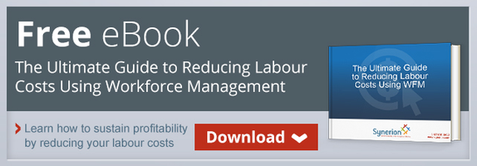 While the healthcare industry needs to be financially successful, it also needs to provide excellent patient care. No one works in healthcare without wanting to positively impact their patients and their community but for many, scheduling practices are getting in the way of patient care.
While the healthcare industry needs to be financially successful, it also needs to provide excellent patient care. No one works in healthcare without wanting to positively impact their patients and their community but for many, scheduling practices are getting in the way of patient care.
Consider these common ways that patient care can be compromised by poor scheduling practices.
Expanding Your Practice
No matter where your healthcare facility practices medicine, there’s always room for expansion. Taking more patients into a practice improves the overall health of the community and poor scheduling practices can reduce your ability to provide that care. Whether it’s from front-line personnel not optimizing the amount of patients through the door or managers failing to adequately schedule trained personnel to provide physician support, the person who loses in the equation is the patient.
Practices need to spend more time assessing their scheduling and finding ways to encompass more patients into their practice. If there are too few appointments available to provide adequate care, it may be necessary to increase staffing while too many open appointments may point towards front desk staff needing to take a more active role in ensuring patients attend appointments.
Tracking Third Next Available Appointment
One measure that more and more quality improvement agencies are looking at is third next available appointment (TNAA). TNAA is a great measure for healthcare providers because it helps quantify how long patients are waiting for routine and follow-up care. When practices can reduce the wait for the TNAA, patients receive prompt care and can address health issues earlier, preventing hospital stays.
When offices aren’t tracking TNAA, they often aren’t thinking ahead and addressing the steps they need to take to expand the practice and provide better patient care. If your TNAA is weeks or even months, it's time to look towards better scheduling practices to ensure patients receive follow up care.
Reducing Burnout and Turnover
Healthcare is known for its high burnout and turnover rate. Too often, there are simply not enough qualified employees and too many patients needing care, resulting in stressful and sometimes hostile workplaces. When patient scheduling isn’t standardized and semi-automated, it can also contribute to that burnout and turnover.
Providers become frustrated at being overbooked while nurses and support staff are forced to continually stay late. These stressors not only result in short staffing which can reduce the amount of patients that can be seen in a given day but also can reduce the quality of care patient’s receive.
Filling Empty Appointment Slots
While too many appointments can cause stress and burnout, a lack of appointments can be just as damaging to patient care. Leaving appointment slots open, whether they be by lack of planning or patients failing to show up for their appointment, means that less patients are able to see their provider. These patients may be discouraged to schedule routine follow-ups because of the lack of appointments, resulting in health issues going untreated and a higher chance of hospitalization.
Ensuring that empty slots are filled whether through a walk-in clinic or simply ensuring providers see patients through double booking appointments can help reduce the impact of scheduling on patient care.
Healthcare scheduling is important and many healthcare practices can do more to ensure better patient care through it. By implementing a workforce management system, tracking and reducing TNAA, and continually assessing scheduling to optimize the amount of patients seen, healthcare providers can ensure better patient care for their community.
